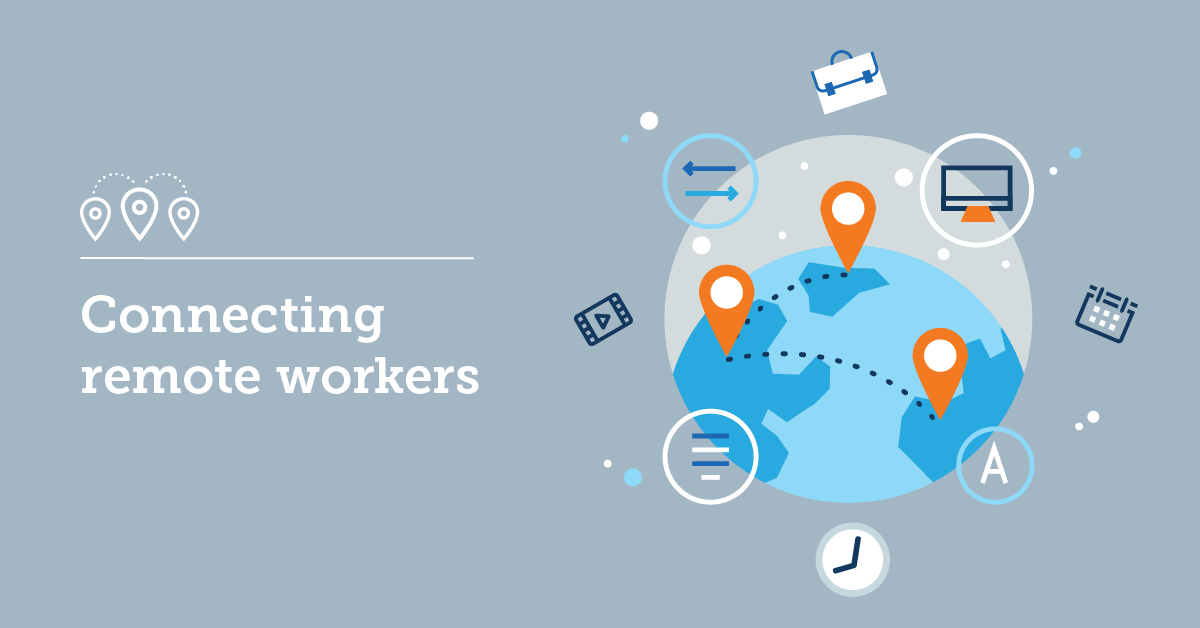
As companies take serious steps to protect employees from the spread of coronavirus by restricting mobility, remote work has become the new normal. However, maintaining strong and productive relationships with co-workers and clients can be challenging when you never see them in-person. Yet, thanks to today’s advanced technology, teams can collaborate and communicate remotely with ease, and still feel like they are meeting face-to-face.
Over time, as the technology gone advanced and time changed, working from home is become more desirable. People wanted the flexibility to manage their life and work as well, and to set their own hours where possible. Plus, many companies realized that there was a wealth of talent waiting for them outside the radius of commuting distance. Work from home tools, like online project management software and virtual conferencing platforms, made this transition ease and possible. Today, working from home can be fully considered a booming trend. In fact, it’s saving much time of companies, keeping them productive and creating efficiencies to help their bottom line.
Today, even after the world is healing from COVID-19, working remotely has become a hot discussion across the globe for various benefits it offers to both the employees and companies. With remote hiring, companies have found a manner to work sustainably and receive benefits in the long term. It has given the companies a new way to deal with unexpected events like lockdowns due to COVID-19. On the other hand, the productivity levels of employees increased drastically. However, there are some cons attached to managing remote work and remote employees.
Mistakes you need to avoid when managing remote workforce.
Lack of communication
It can be easy to forget about your employees or contractors in remote locations. Make sure you have regular “check-ins” so you know what is happening with your team, and how things are going. Lack of communication & poor communication can lead to misunderstandings, conflicts, and ambiguous expectations. Since most communication happens virtually, one needs to use appropriate words and avoid any confusion. At times, how a person writes a message and how the receiver interprets it can be very different, especially if the language is not native. So, make sure that employees clearly understand what is expected of them. It is also recommended to use more positive words and revive the culture of magic words such as Thank you, Please and others.
Micromanaging
Many employees turn to remote positions because of the freedom they bring. While you certainly want to set your expectations from the very beginning, give your employees some leeway. If you allow them to work whenever is best for them, do not be judgmental, upset when you not receive a response of a call, an email. List your expectations in your remote work policy, and then give employees freedom as long as they meet those expectations.
Fail to provide the right tools & tech support
Remote or contract employees need the same tools as anyone else in your organization. That means computers, office supplies, software anything you would normally provide an employee in your office. Mistakes you need to avoid when managing remote workforce.
This can be especially tricky for contractors or freelancers who work with your company on a regular basis. You need them to use the same tools you use as your team to get things done with proper technical support 24*7.
Not getting to know them personally
When you work with someone in an office, you get to know them as a person. You learn their interests and their frustrations, and you will probably even meet their family at some point. These details help people develop trust and rapport on your team. Unfortunately, these kinds of personal details do not tend to come out when working with a remote team member. As the manager, you will need to be intentional about getting to know your employees personally also the ways to engage your remote workforce. Adding a bit of small talk to the beginning of your one-on-one calls can help remote employees feel like part of the team.
Neglecting online team meetings
Remote positions can be lonely and isolating. Team members may not feel that they know their co-workers well enough to approach them with questions or concerns. To change this implement regular team interactions such as, weekly get to know you questions, weekly online quizzes, monthly lunches via video conferencing etc.
Not including them in to the office advantages
Full time positions usually come with additional benefits & rewards that part-time roles are not eligible for. So sometime you need to reward your remote by giving benefits. Benefits or compensation packages are offered to remote employees as additional payment for their hard work. Some examples of benefits include:
- Perks
- Family leave
- Medical, Sick leave
- Performance appraisal
- Gift cards, Worker’s compensation etc.


